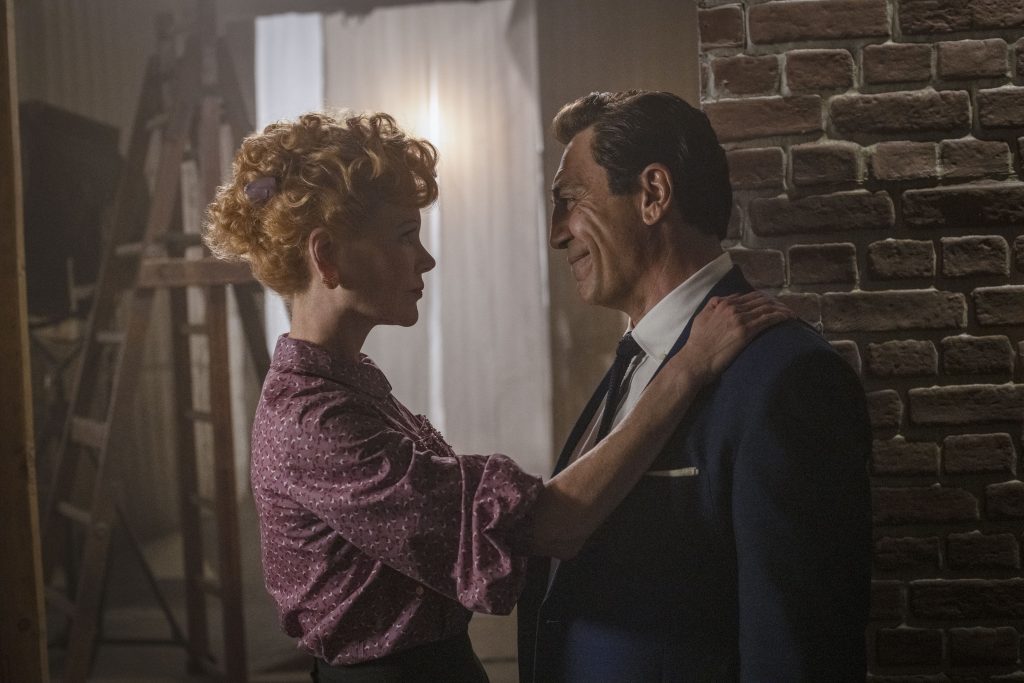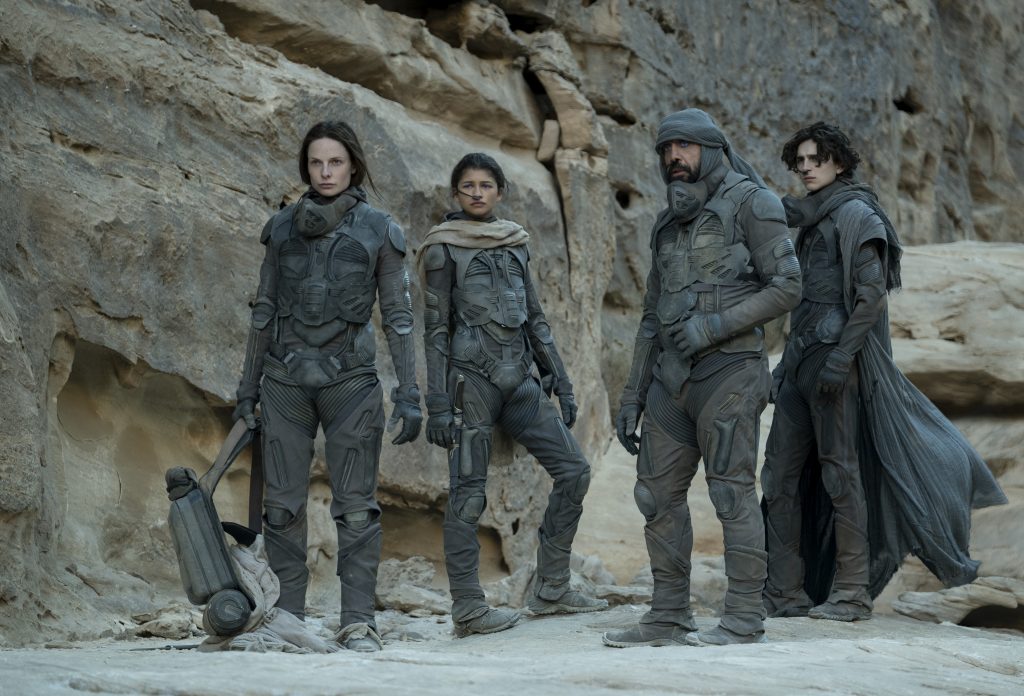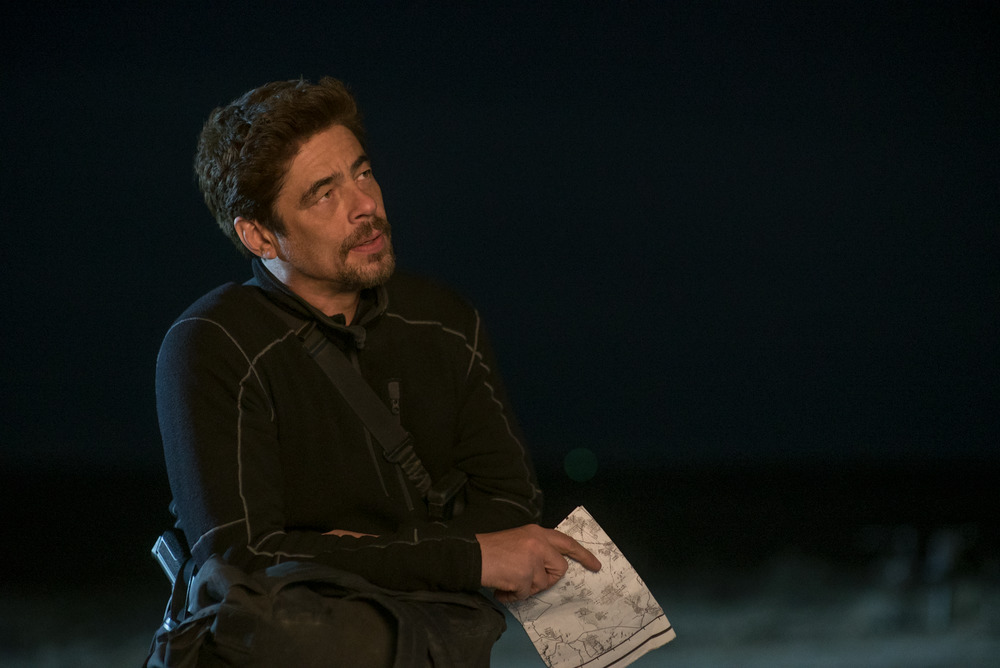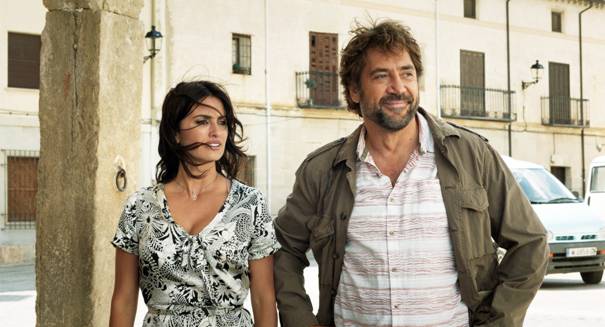October 6, 2022
by Carla Hay

Directed by Will Speck and Josh Gordon
Culture Representation: Taking place in New York City, the comedy musical film “Lyle, Lyle, Crocodile” features a predominantly white cast of characters (with some Asians, African Americans and Latinos) representing the middle-class and working-class.
Culture Clash: When a flamboyant vaudeville performer suddenly has to leave home to go on tour, he leaves his singing crocodile behind in his New York City home, where a new family moves in, keeps the crocodile as a pet, and gets in trouble for it by a neighbor who wants the crocodile out of this residential neighborhood.
Culture Audience: “Lyle, Lyle, Crocodile” will appeal primarily to fans of Bernard Haber’s 1965 book of the same name and family-friendly movies that dumb down the original source material.
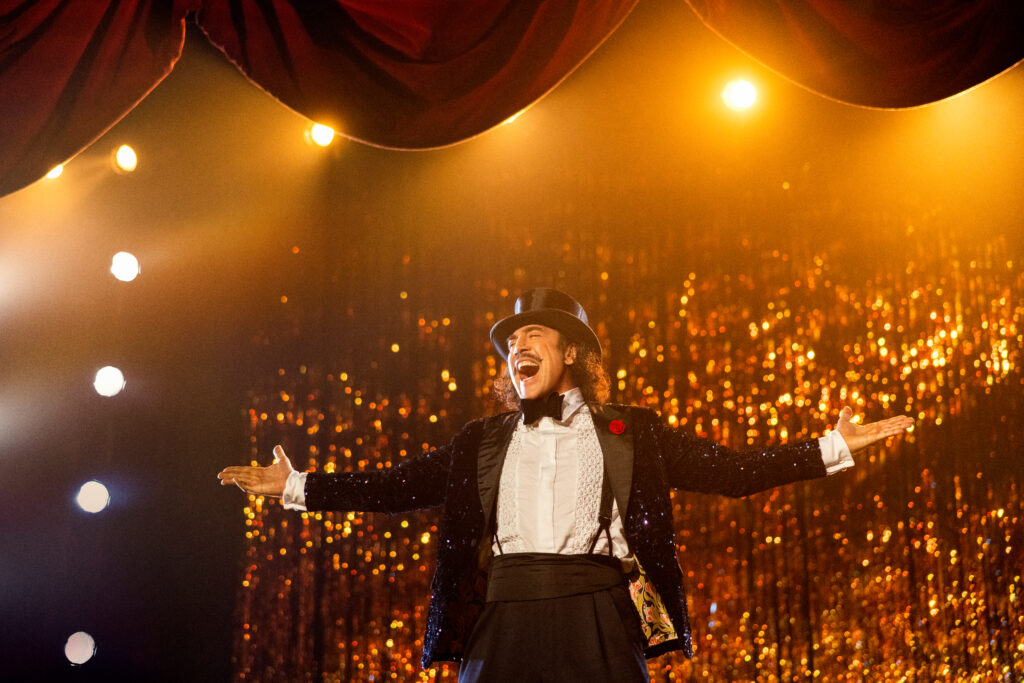
Simple-minded to a fault, the trite comedy “Lyle, Lyle, Crocodile” fails to do justice to Bernard Waber’s charming children’s book. The original songs are the best aspects of this dull and vapid movie, which relentlessly insults viewers’ intelligence. There’s so much tedious formula in the movie’s screenplay and so much lazy editing, it’s obvious that more thought and imagination were put into crafting the songs rather than putting an innovative cinematic spin on a beloved children’s book.
Directed by Will Speck and Josh Gordon, “Lyle, Lyle, Crocodile” looks like the filmmakers decided to just coast on the name recognition of the “Lyle the Crocodile” book series and put some famous people in the movie’s cast as a way to fool audiences into thinking that it would be a reasonably good film. It’s not. Will Davies wrote the very lazy and unimaginative “Lyle, Lyle, Crocodile” screenplay. Apparently, the “Lyle, Lyle, Crocodile” filmmakers think that “child-oriented entertainment” is supposed to be “stupid entertainment.”
“Lyle, Lyle, Crocodile” (which takes place in New York City) begins by introducing vaudeville performer Hector P. Valenti (played by Javier Bardem), who can be a fast-talking, hustling con artist when he has to be. Hector will say and do anything to make quick money from whatever he can do in showbiz. In the movie’s opening scene, Hector fails an audition to be a magician on a TV talent show called “Show Us What You’ve Got.”
Hector soon meets a smaller-than-usual adult crocodile that he names Lyle, which he buys from a pet store called Eddie’s Exotic Animals. Hector (who is bachelor with no children) brings Lyle home to live with him as a pet. Never mind that in real life, you just can’t walk into a pet store and buy a crocodile, because that type of animal sale in a pet store is illegal. And it’s also illegal in New York City and most other U.S. cities to keep a crocodile as a pet in a private, residential home. This lack of realism is not this movie’s biggest problem.
At first, Hector thinks he’s just going to have the crocodile as part of Hector’s mediocre magician act. But then, Hector finds out that Lyle can sing. And the next thing you know, Lyle and Hector become a performing duo. Lyle is the main attraction, while Hector is the emcee. The duo’s act become a big hit.
But their good fortune comes to an abrupt halt when Lyle unexpectedly loses his singing voice while on stage. Hector calls it a “minor setback,” and he decides he’ll have to go on tour as a solo act to make some money. While Hector is away from home, he keeps Lyle hidden in the attic. Hector leaves Lyle behind with nothing but a book of songs.
Although “Lyle, Lyle, Crocodile” is lightweight entertainment, the movie irresponsibly glosses over some issues that should have been addressed in the movie. Lyle (who looks very sad to see Hector go) essentially has to fend for himself when locked up in the home. It’s a form of animal cruelty. Because it isn’t made clear how long Hector will be away, it’s very likely Lyle was going to run out of food.
And apparently, Hector was away for so long, another family moved into what the family thought was an unoccupied house. The real-estate situation in this story is very murky and purposely vague, ignoring real-life details such as house inspections and home appraisals that home owners usually have to go through before buying or renting out a home. It’s also never really clear why or how this house went on the market. There’s some real-estate talk rushed in toward the end of the movie to conveniently explain something to make a problem go away, but it’s all so ridiculous and phony.
Hector eventually comes home and finds out another family is living there, and these new residents have found Lyle. And eventually (as shown in the movie’s trailer), Hector joins in on some of the shenanigans involving Lyle and the family trying to prevent Lyle from being confiscated by animal welfare authorities. Hector should’ve thought of that when he left a crocodile home alone for who knows how long.
But there would be no “Lyle, Lyle, Crocodile” movie if people acted with common sense. At any rate, you already know where this story is going if you’re familiar with the “Lyle the Crocodile” book series, or if you’ve seen enough movies were an animal befriends a lonely, misfit child, but a miserable adult wants to break up the friendship by taking the animal away. Predictable stories can be entertaining if delivered with some unique flair, but “Lyle, Lyle, Crocodile” lacks a lot of creativity in the movie’s dialogue and action scenes.
The family that ends up sharing living space with Lyle consists of married couple Mr. Primm (played by Scoot McNairy), Mrs. Primm (played by Constance Wu) and their son Josh Primm (played by Winslow Fegley), who’s about 12 or 13 years old. Most of the adults in the movie do not have first names. And they also don’t have anything memorable to say.
Josh isn’t happy about this move to a new home, because he liked living in the unnamed suburbs where the family used to live. Joe complains out loud that most people move to the suburbs to get away from the city, and he doesn’t understand why his parents wanted to do the opposite. Get used to seeing Josh being a bit of a whiny brat, because that’s apparently why he needs a talking and singing crocodile to teach him how to be a better human being.
Josh has problems fitting in at his new school. He doesn’t excel at anything in particular, and he has a hard time making friends. He’s on the school’s wrestling team, where he frequently loses in practice matches. Guess who’s going to get Josh to do things that are outside of Josh’s comfort zone to experience things that will build up Josh’s confidence? Josh also predictably befriends a neighborhood girl named Kara Delany (played by Lyric), a generic character who’s only in the movie to give Josh someone else to hang out with besides Lyle.
Before Josh and Lyle become friends, Lyle and Josh get off to a rough start, when Josh at first thinks that this crocodile is a pesky nuisance. There are some not-very-funny slapstick scenes of Lyle escaping from the house and causing some mischief. In one scene, Lyle accidentally swallows a neighbor’s pet cat, but then Lyle ends up vomiting up the cat unharmed.
Eventually, Mr. and Mrs. Primm find out about Lyle, who charms almost every human he meets with his upbeat singing. Mr. Primm is a laid-back teacher at a private middle school for girls, who wear matching school uniforms. Mrs. Primm is a cookbook author who is frustrated that she put her career on hold to raise Josh. Expect to see some tedious and predictable scenes involving Mrs. Primm’s cooking skills and Lyle.
The story’s “villain” is Mr. Grumps (played by Brett Gelman), who finds out about Lyle and is outraged that there’s a crocodile living as a pet in a residential building. Mr. Grumps is determined to have Lyle removed and taken away from the home. Apparently, Mr. Grumps didn’t get the memo that crocodiles aren’t dangerous if they can sing human songs.
“Lyle, Lyle, Crocodile” doesn’t have much of a story and attempts to fill this void with several performances of songs written for the movie. Oscar-winning songwriting duo Benj Pasek and Justin Paul (“La La Land”) wrote most of the original songs in “Lyle, Lyle, Crocodile. Other songwriters who contributed to the movie’s original tunes include Mendes, Joriah Kwamé, Emily Gardner Xu Hall, Mark Sonnenblick and Arianna Asfar. Pasek, Paul and Matthew Margeson co-wrote the movie’s original score.
Even with all this songwriting talent, there’s nothing award-worthy about the movie’s music, which is far from Pasek and Paul’s best work. Songs like “Take a Look at Us Now” (a Mendes/Bardem duet), “Carried Away,” “Rip Up the Recipe” (a Mendes/Wu duet) and “Top of the World” are pleasant, but also instantly forgettable. Pasek and Paul wrote original songs for 2017’s “The Greatest Showman,” which had a lot of memorable and catchy tunes, regardless of how people felt about the movie’s screenplay.
The “Lyle, Lyle, Crocodile” filmmakers also made the odd decision not to have “best friends” Lyle and Josh perform a duet, which would have given this movie more emotional resonance. Fegley is one of the main characters in the movie, but he doesn’t even have a moment in the movie to shine in the spotlight as a singer, in the way that Bardem and Wu have their respective duets with Mendes. As it stands, so much of “Lyle, Lyle, Crocodile” looks and sounds assembly-line formulaic. There’s very little soul to be found in this hollow film.
Bardem seems to be having some fun hamming it up in his song-and-dance scenes, but that’s not saying much, because he’s not a great singer or dancer. He’s not terrible, just not superb. The computer-generated animation for Lyle doesn’t have much of a charismatic personality, especially when Lyle loses his singing voice for a large chunk of the story. Mendes is bland and bland can be in this role.
Fegley does a version of the many misfit kid characters that he’s played in movies. McNairy and Wu look like they’re just going through the motions and reciting lines of dialogue. Gelman is nothing but a caricature villain. Everything in this movie is cliché-ridden, very corny, and not very funny for a movie that’s supposed to be a comedy.
“Lyle, Lyle, Crocodile” drags on and on with silly scenarios until the movie’s inevitable conclusion. (And yes, there’s a predictable scene where Elton John’s “Crocodile Rock” is performed by members of the cast.) In real life, crocodiles spend a lot of time in water. “Lyle, Lyle, Crocodile” is so watered-down with banality, it’s washed away any outstanding qualities that this disappointing movie could have had.
Columbia Pictures will release “Lyle, Lyle, Crocodile” in U.S. cinemas on October 7, 2022.

